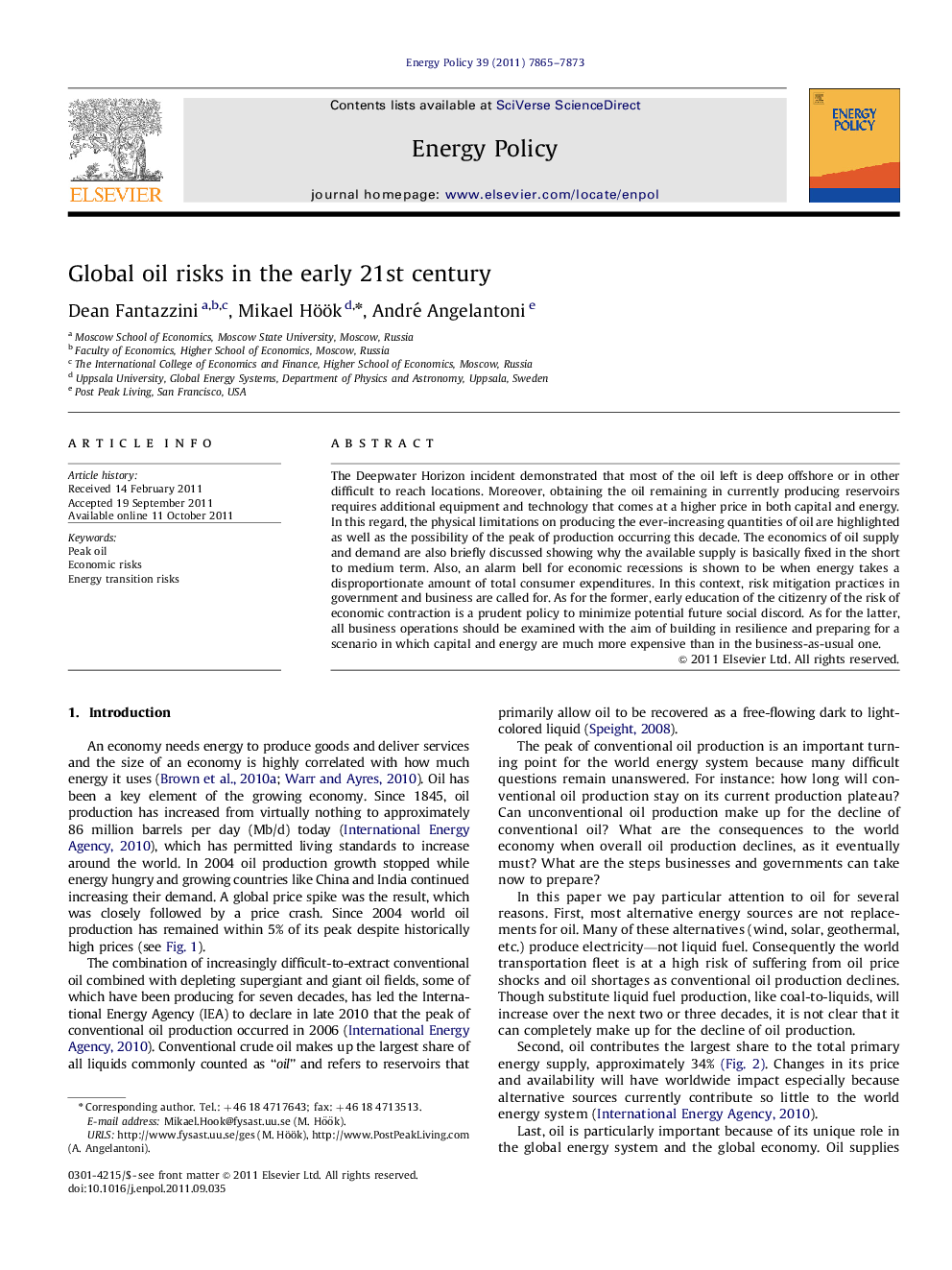| Article ID | Journal | Published Year | Pages | File Type |
|---|---|---|---|---|
| 993230 | Energy Policy | 2011 | 9 Pages |
The Deepwater Horizon incident demonstrated that most of the oil left is deep offshore or in other difficult to reach locations. Moreover, obtaining the oil remaining in currently producing reservoirs requires additional equipment and technology that comes at a higher price in both capital and energy. In this regard, the physical limitations on producing the ever-increasing quantities of oil are highlighted as well as the possibility of the peak of production occurring this decade. The economics of oil supply and demand are also briefly discussed showing why the available supply is basically fixed in the short to medium term. Also, an alarm bell for economic recessions is shown to be when energy takes a disproportionate amount of total consumer expenditures. In this context, risk mitigation practices in government and business are called for. As for the former, early education of the citizenry of the risk of economic contraction is a prudent policy to minimize potential future social discord. As for the latter, all business operations should be examined with the aim of building in resilience and preparing for a scenario in which capital and energy are much more expensive than in the business-as-usual one.
► Review of the physical background to peak oil and current oil situation. ► Economics of oil supply and demand are examined to identify imminent challenges. ► Investigation of the financial and energy transition risks associated with peak oil. ► Oil scarcity and price volatility induce certain governmental and business risks. ► General risk mitigation is vital and peak oil preparations should be undertaken.
